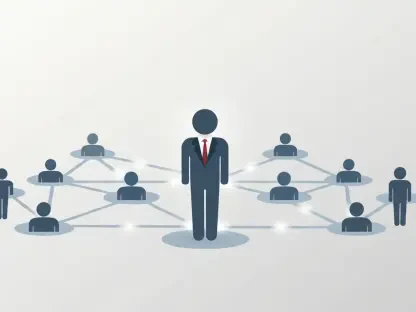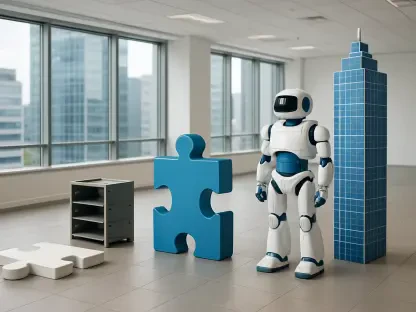Businesses across the globe are increasingly becoming skills-powered organizations, driven by the pressing need to address talent gaps that could threaten sustainable growth and innovation. Recent research by Mercer highlights this shift, revealing that organizations are keenly aware of the importance of understanding and leveraging the skills within their workforce. Insights from over 1,100 talent, rewards, and HR team leaders from 74 countries illuminate a significant evolution in skills mapping and skills-based reward systems. As these elements become more entrenched in corporate structures, they herald a new era of talent management focused on agility and continuous learning.
The Emergence of Skills Libraries and Mapping
Organizations, recognizing the urgency of bridging skills gaps, have accelerated efforts to catalog and map workforce skills to specific job roles. The creation of comprehensive skills libraries has become a common practice, allowing companies to identify critical competencies required for each department. Nearly 70% of businesses have taken proactive steps in this direction, employing both employee and manager self-reporting to gather accurate data on existing skills. This method ensures a dynamic and updated repository of workforce capabilities, essential for strategic planning and development.
Skills mapping’s effectiveness in attracting in-demand talents is particularly noteworthy. Companies that successfully link particular skills to individual employees find themselves at an advantage in the competitive job market. By clearly defining proficiency frameworks and distinguishing between varying competency levels, these organizations craft more effective development programs that align with both immediate and long-term business goals.
Incentivizing Skills Acquisition
The implementation of skills-based reward programs represents a significant trend in contemporary HR strategies. A marked increase in the percentage of organizations incorporating skills acquisition into their reward systems points to a broader recognition of its value. Currently, around 23% of companies have adopted this approach, integrating skills and rewards to motivate continuous professional development. What was once a fledgling concept has seen a remarkable rise, underlining a growing consensus on the importance of incentivizing skillfulness.
Furthermore, nearly half of HR leaders (45%) are now prioritizing the reward of skills acquisition as their primary strategy for addressing skills shortages. This approach not only encourages employees to upskill but also fosters a culture of growth and innovation. Employees are more inclined to invest in their professional development when they see tangible rewards tied to their efforts, thereby creating a win-win situation for both the workforce and the organization.
Leadership Support and Upskilling Opportunities
Leadership buy-in, once seen as a primary hurdle to the success of skills-based strategies, is no longer the major barrier it once was. This shift suggests a universally accepted business case for these strategies. Senior leaders now recognize the transformative potential of investing in skills development, propelling initiatives that focus on upskilling and reskilling the workforce. With this high-level support, organizations are more confidently navigating the complexities of modern talent management.
The willingness of employees to participate in upskilling programs is another positive signal for businesses. As roles evolve and new technologies emerge, the risk of skill obsolescence looms large. Employees understand the necessity of keeping their abilities current and are more than willing to engage in professional development opportunities presented by their employers. This mutual recognition of the need for upskilling creates a conducive environment for meaningful organizational change.
Potential-Based Hiring and Its Impact
Adding a valuable dimension to the conversation, a March report from Gartner highlighted the efficacy of potential-based hiring. According to the study, employees selected based on their potential to learn and adapt outperform those chosen solely for their existing skills. This insight supports a shift in recruitment strategies, focusing on individuals’ willingness and capability to acquire new skills quickly. Organizations adapting to this model are better equipped to build a versatile and resilient workforce capable of meeting the dynamic demands of market changes.
Potential-based hiring also underpins the broader narrative around continuous learning. By prioritizing adaptability and eagerness to learn, businesses cultivate a workforce that is not only adaptable but also ready to pivot in response to future challenges. This approach mitigates the risks associated with skill gaps and enhances overall organizational agility.
Advancing Skills Development and Mobility
Businesses worldwide are increasingly evolving into skills-driven organizations due to the urgent need to close talent gaps that might hinder sustainable growth and innovation. According to recent research conducted by Mercer, companies are paying closer attention to identifying and utilizing the skills present within their workforce. The study, which surveyed over 1,100 leaders in talent, rewards, and human resources from 74 different countries, highlights a notable transformation in skills mapping and skills-based compensation systems. As these practices become more embedded in corporate operations, they signify a new phase in talent management that emphasizes agility, adaptability, and ongoing education. This shift underscores the critical role that continuous learning and flexible skills development play in maintaining a competitive edge in an ever-changing global market. Organizations that prioritize these strategies are better positioned to innovate and thrive, setting a precedent for a more dynamic approach to managing human capital.









